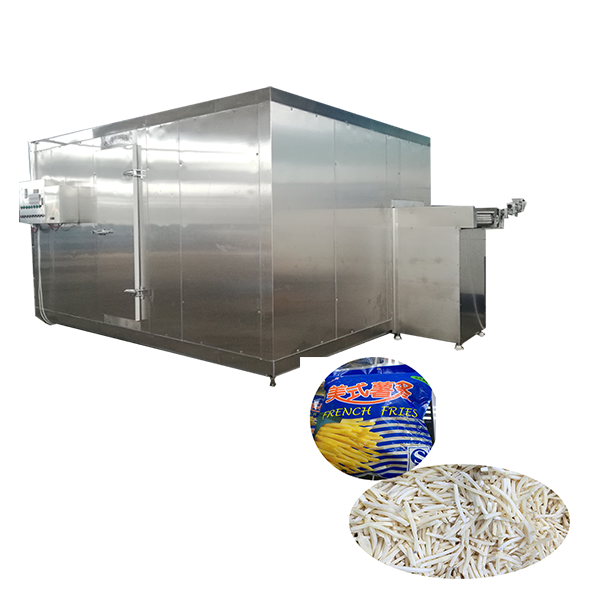French fries are among the highest viable potato products all around the world and are traditionally produced by cutting potato strips from fresh potatoes which are then deep fat fried.
Frozen French fries nutrition information
| Ingredient | per 100 g serving | % of daily value diet |
| Vitamin C | 10.5 – 24.5 mg | 30% of daily value |
| Potassium-containing | 385-433 mg | 12% of daily value |
| Calcium | 8-11 mg | |
| Iron | 0.54-0.77 mg | |
| Source: USDA-SR Legacy 170523 | ||
Generally, French fries are prepared and sold as par-fried frozen product. I.e. Deep-frozen partially fried strips, require additional frying before consumption.
A frozen French fried fries process includes potatoes peeling, trimming, slicing into fries, blanching, dehydration, par-frying, de-fating, cooling and individual quick freezing (IQF) .
The manufacturing process involves grading, dry sorting, destoning, peeling, washing, and further trimming.
Depending upon the thickness of periderm, potatoes are peeled by carborundum or brush peeler. Brush peelers are preferred for newly harvested tubers or immature periderm. Losses due to peeling may reach up to 20%. Excessive peeling may decrease the yield.
Lengthwise cutting are used for cutting of French fries, approximate cross‐section dimensions of ¼″ × ¼″, 3/8″ × 3/8″, ½″ × ¾″, ¾″ × ¾″). After cutting, potato sticks is washed with normal water to remove the loose starch present of the surface of sticks.
The raw potato sticks are first blanched (preferably 60-80 C for 5-8 minutes) to a throughout translucent condition and then cooled. In addition to enzyme inactivation blanching helps to reduce the sugars and stabilize the colour, retain the texture of the product, reduce fat absorption by gelatinizing the surface layer of starch, and reduces the frying time.
Once the strips are blanched, they are partially dehydrated to reduce the moisture content either by air pressure or by centrifugal force. Remove surface moisture is necessary as it may spoil the quality of frying oil very rapidly by thermo hydrolytic degradation.
Then, the strips are immersed in a deep fat fryer for a short period of time (90 to 120 seconds), at an oil temperature of about 180-190 C, during which the moisture content is still further reduced and the strips are partially fried.
The strips are then directly quick frozen at about -18 to -20 C. They may be maintained in their frozen state (-18 C) for many months.
Before consumption these fries need additional deep frying at a temperature of about 180-190 C for a short time till desired golden colour and crispy texture is achieved.


